On Friday, January 10th, Atlanta experienced a rare snowstorm. Sunday, January 12th brought warm afternoon sun, and the brief wintry landscape began to dissolve into memory and mud. But for a few days, we lived in a world of icy silver and sparkling white.
The sun still slept below the horizon. The back garden waited, enshrouded in shadow, but white interrupted the pre-dawn darkness. Fast, fat snowflakes fell through the chill, gray air — falling stars from the not-quite-morning sky. Their blurry movement wove a shifting veil between me and the trees. It obscured the black branches that stretched and spiraled like lines of ink across the paper-white sky. It dampened the red on the wings of the blackbirds, my only companions in the garden.
The day brightened; the snow became freezing rain, yet this did not disturb the snow blanketing the ground. It remained, dense and slushy. As I walked on it, firm walls took shape around my shoes; my steps built structures that stood, straight and strong, long after I had departed.
In my garden, I had looked for color but found a world of grayscale and sepia — an absence of the cardinals, titmice, and bluebirds that typically frequent the feeders. I found instead obsidian blackbirds, the sooty gray and snowy white of dark-eyed juncos, and the pale plumage of sparrows, streaked with stripes the many browns of a winter meadow.
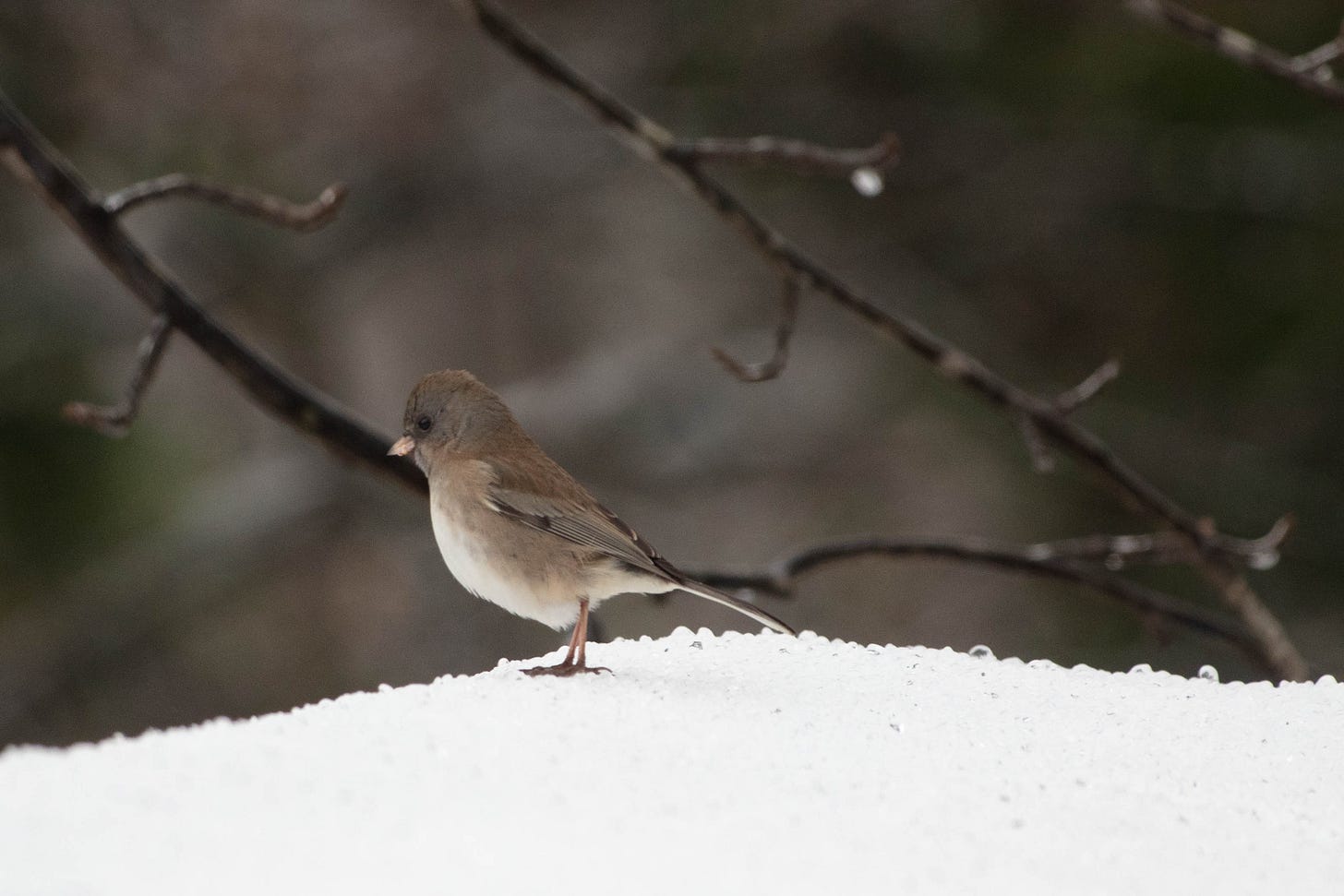
In the late afternoon, I left the garden. I walked down the hill to the headwaters of Camp Creek, which flows at the edge of undeveloped city-owned land in my neighborhood.1
Shadow-dark water, gray like the dark-eyed junco, flowed around dark stones half-hidden by bright snow. Snow covered the trash that collects around the creek; the red I saw this day was not from Solo cups smashed into the grass, but from a brief glimpse of a cardinal among the twisted, piled vines of dead kudzu. A curtain of golden-brown beech leaves hung in the pale mist above the creek. Leaves of Chinese privet and English ivy interrupted the pale landscape with the dark evergreen of their leaves.
I left the creek and wound my way among neighborhood streets, a meandering long way home. The “tsst!” of sparrows whispered from trees along my route, but I saw few birds — a towhee in a tangle of dormant hydrangea and a secretive brown thrasher, seen only as a flash of beech-leaf golden brown, before dissolving into the snarled sticks of a leafless hedge.
Back on my porch, I watched the snow catch the light of the fading day; snow had formed a small, soft curve over the dish of the bird bath — a miniature hill, shining with captured sunlight, a small glow in the gloom of a mostly sunless day. As the sun sank, the air grew cold, and I thought, Tomorrow will be ice.
Saturday arrived, the day of ice. Lichens wrapped around thick tree limbs, fitted garments of crocheted lace flowers in shades of pale turquoise, cyan, and yellow-green. Ice formed a luminescent layer of glass over the lichen lace; ice coated every leaf, branch, and twig. Ice formed shimmering beads where water droplets had frozen — bringing sparkly light to the overcast day. In the afternoon, quick, strong breezes huffed through the trees, causing the icy branches to crackle; when birds landed on the branches, they sagged, bounced, and creaked.
The birds that seemed to be hiding on snowy Friday emerged on icy Saturday. I spent hours popping in and out of the house, onto the back porch, to observe and photograph my backyard birds.

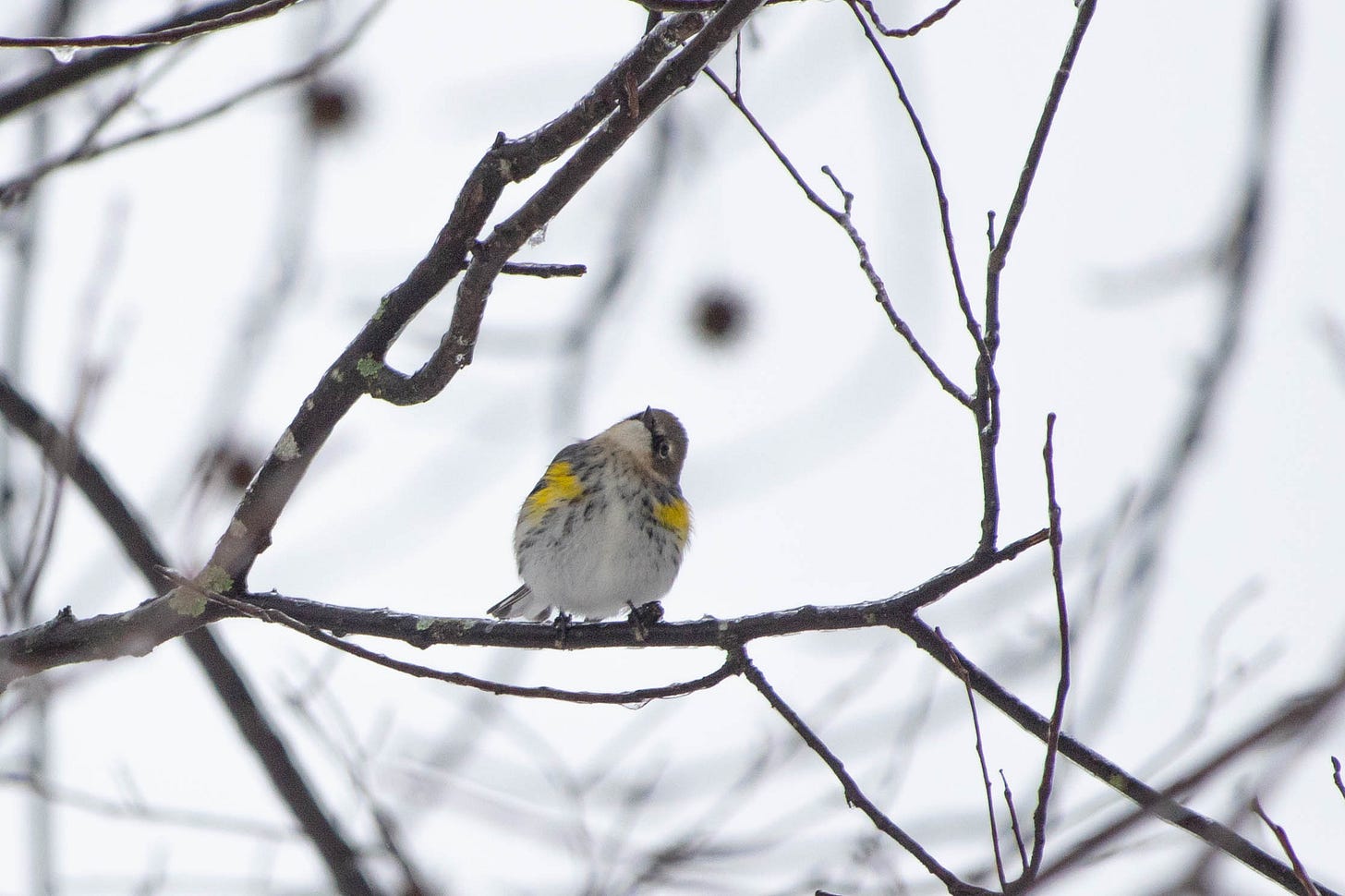
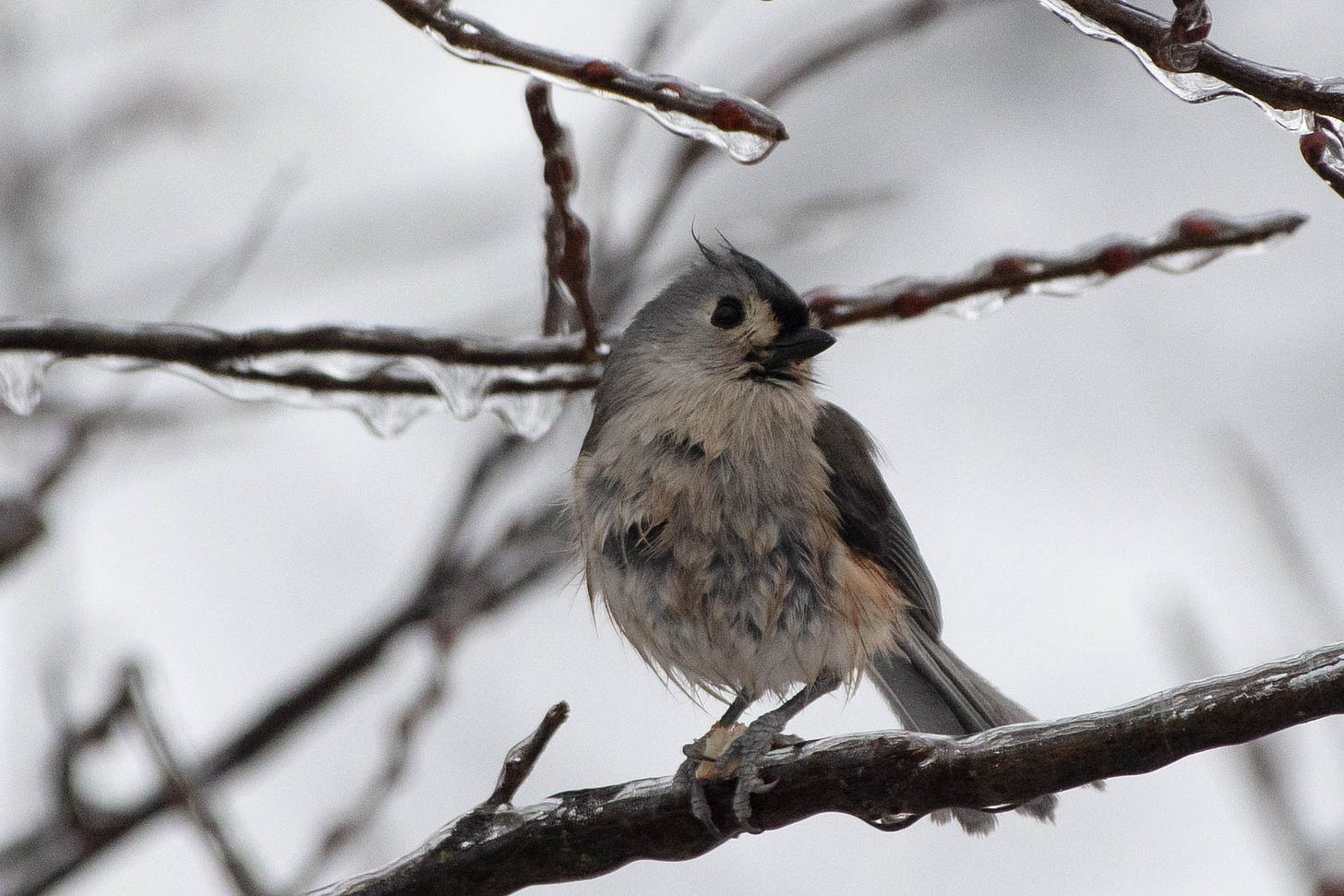
Sunday brought warm afternoon temperatures; the thaw began. But Sunday morning was still frozen, and I ran outside with my macro lens to try to capture the snow and ice before it disappeared. The icicles seemed to have lengthened overnight — rows of sharp, sparkling spikes suspended from each tree branch like teeth.
The solid, pale clouds of the past two days had dissolved. Fluffy clouds floated in a blue sky, the metallic blue of winter, with the color and shine of a blue jay’s wing. Against this was a dazzling array of diamond daggers, sparkling all the more in the sun that was slowly destroying them. In the hours I wandered, photographing my garden, I saw the icicles dissolve from crystal claws to blunt sticks and by mid-afternoon, to water on the ground.
In the evening, I watched the sun through the window, setting into a soft bed of orange clouds that rested on the horizon. Across the sky stretched layers of thin clouds, a curving, scalloped pattern of mauve. I marveled at the light still visible at 6:00pm, a sky of blue, a shining pale orange, and white, the canvas across which the trees’ black branches sketched thick, overlapping lines.
I previously wrote about this place in the following essay:




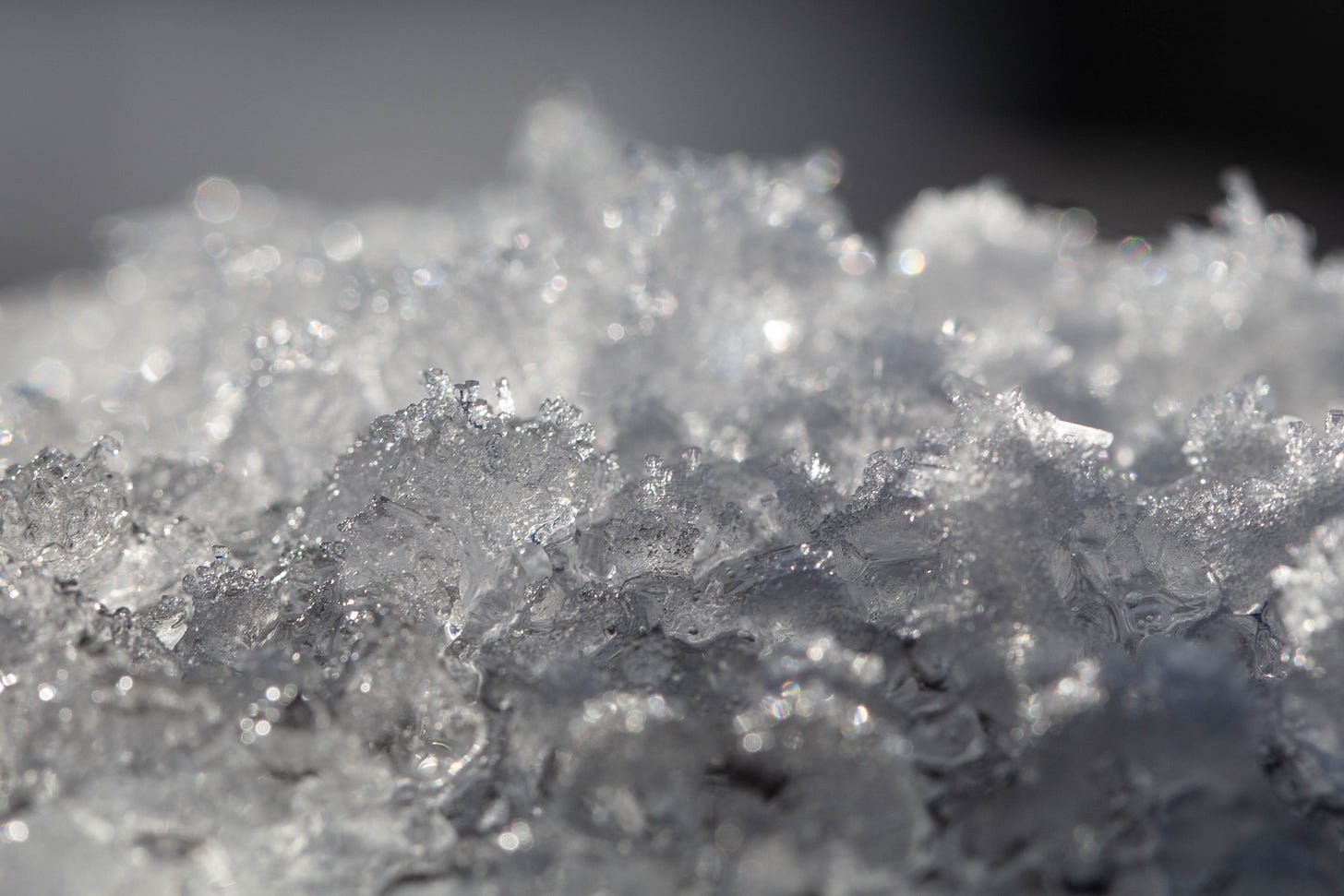
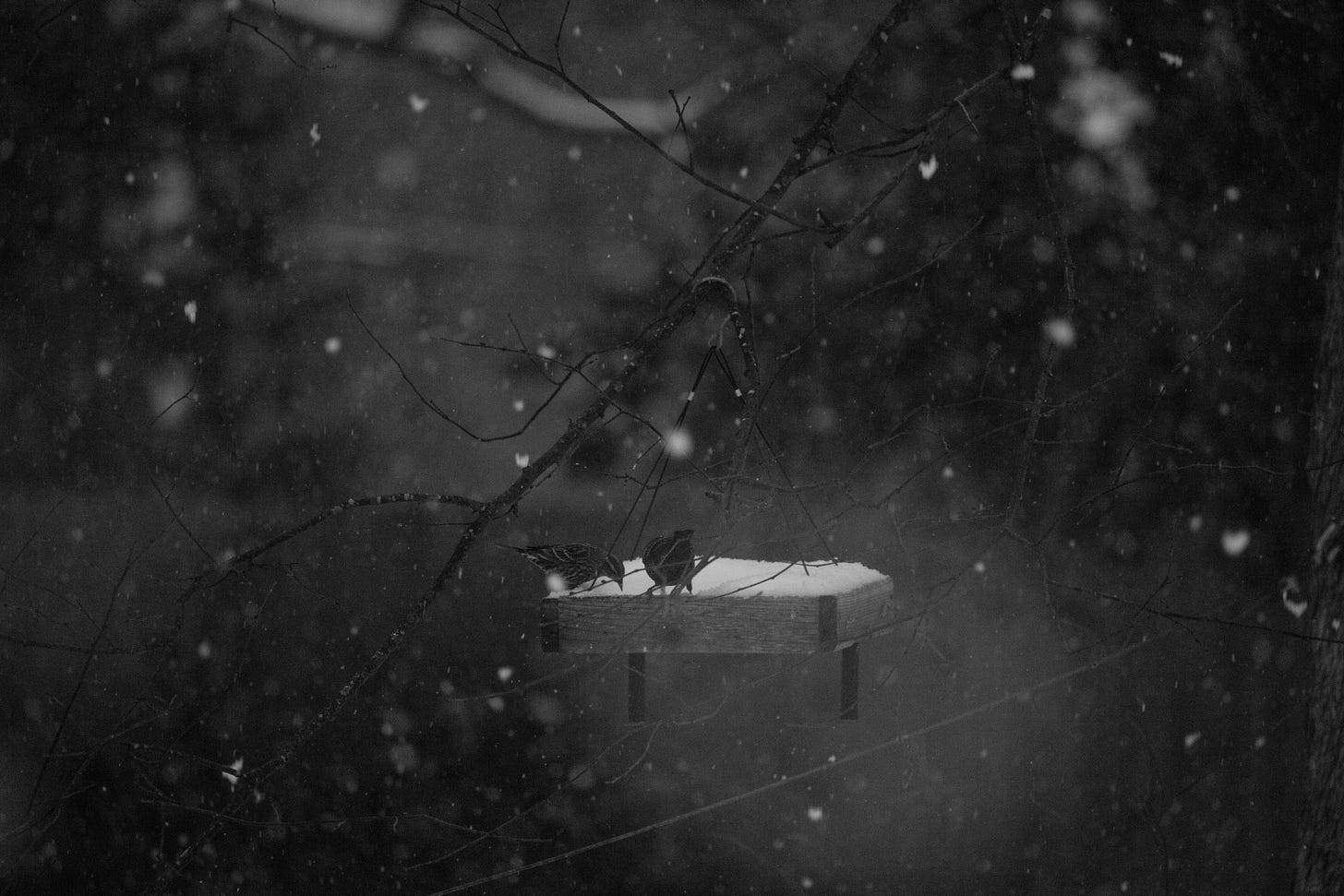


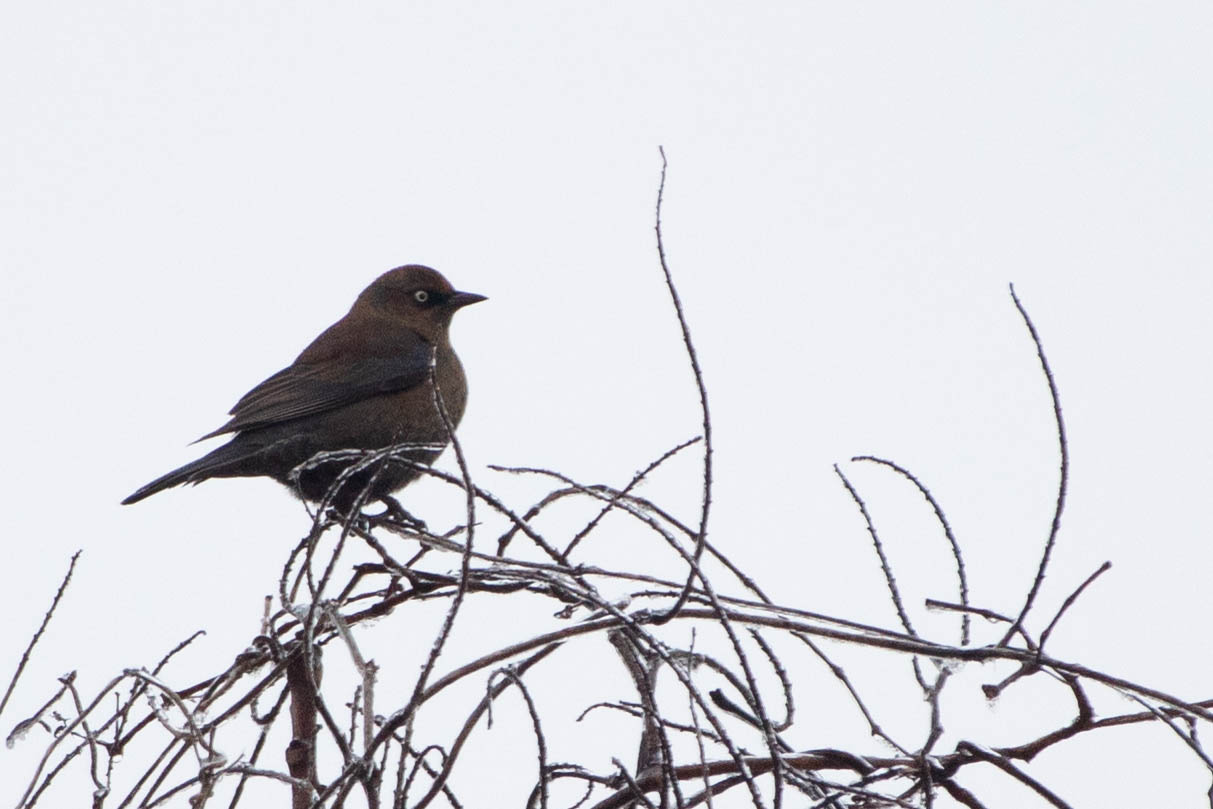
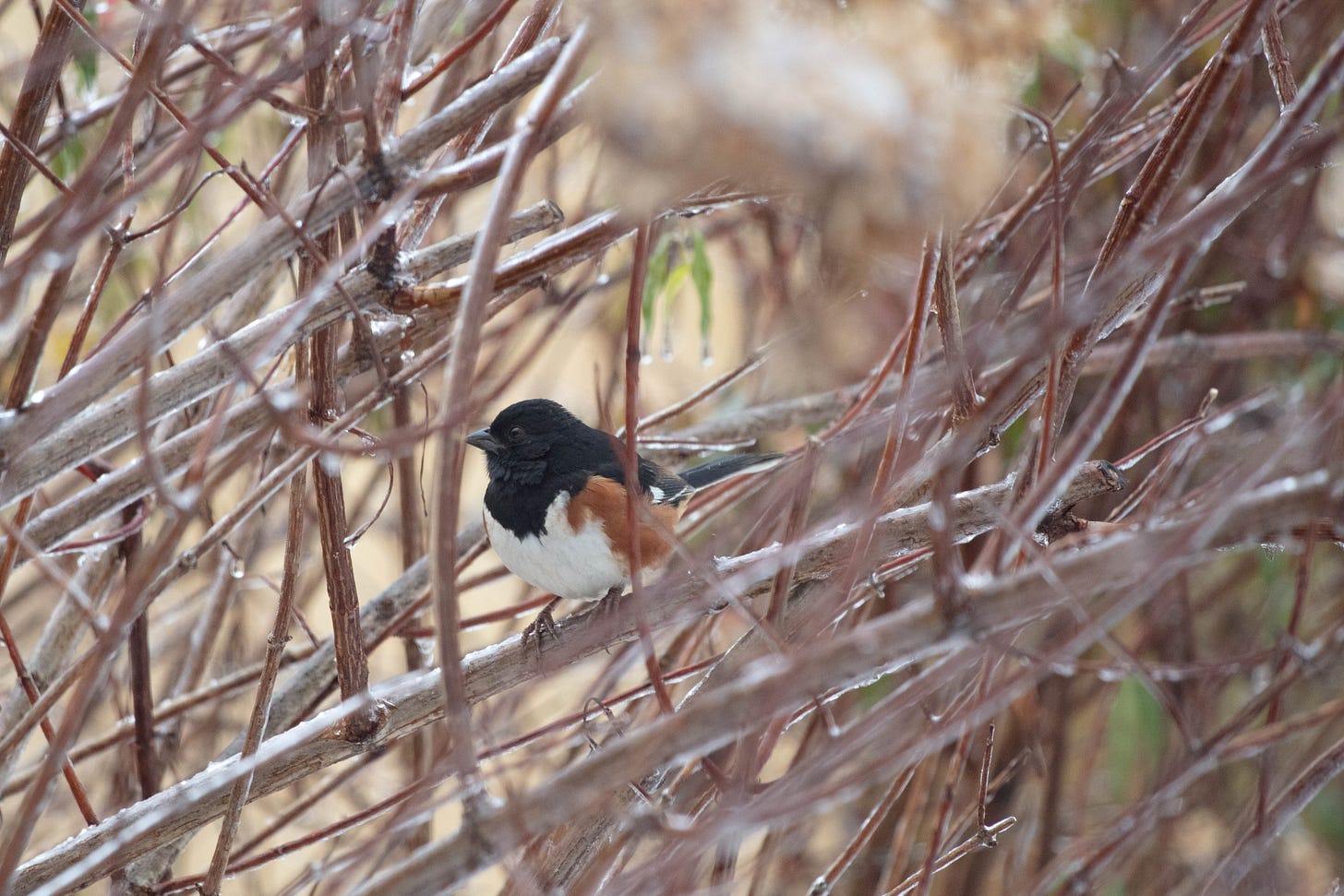
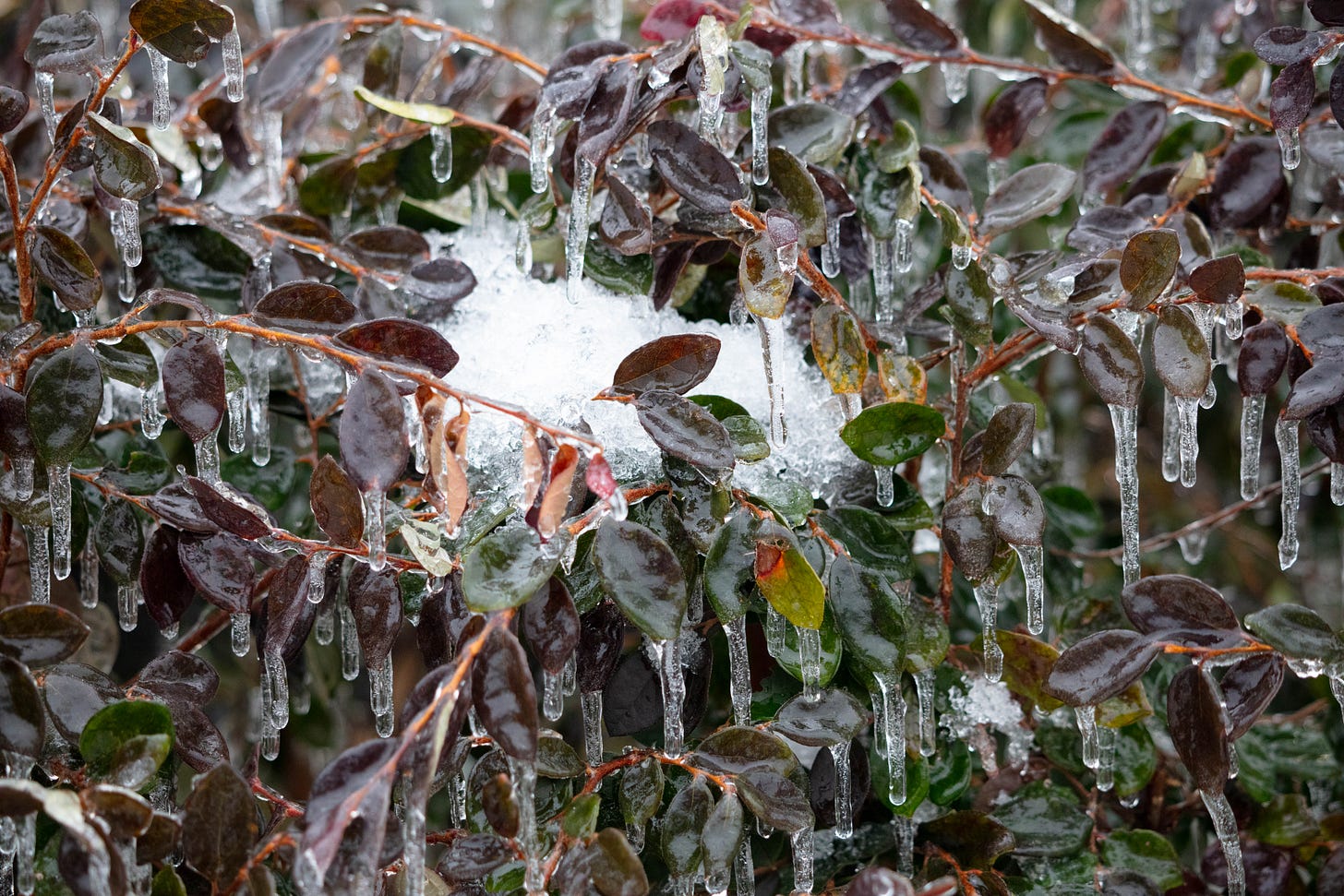

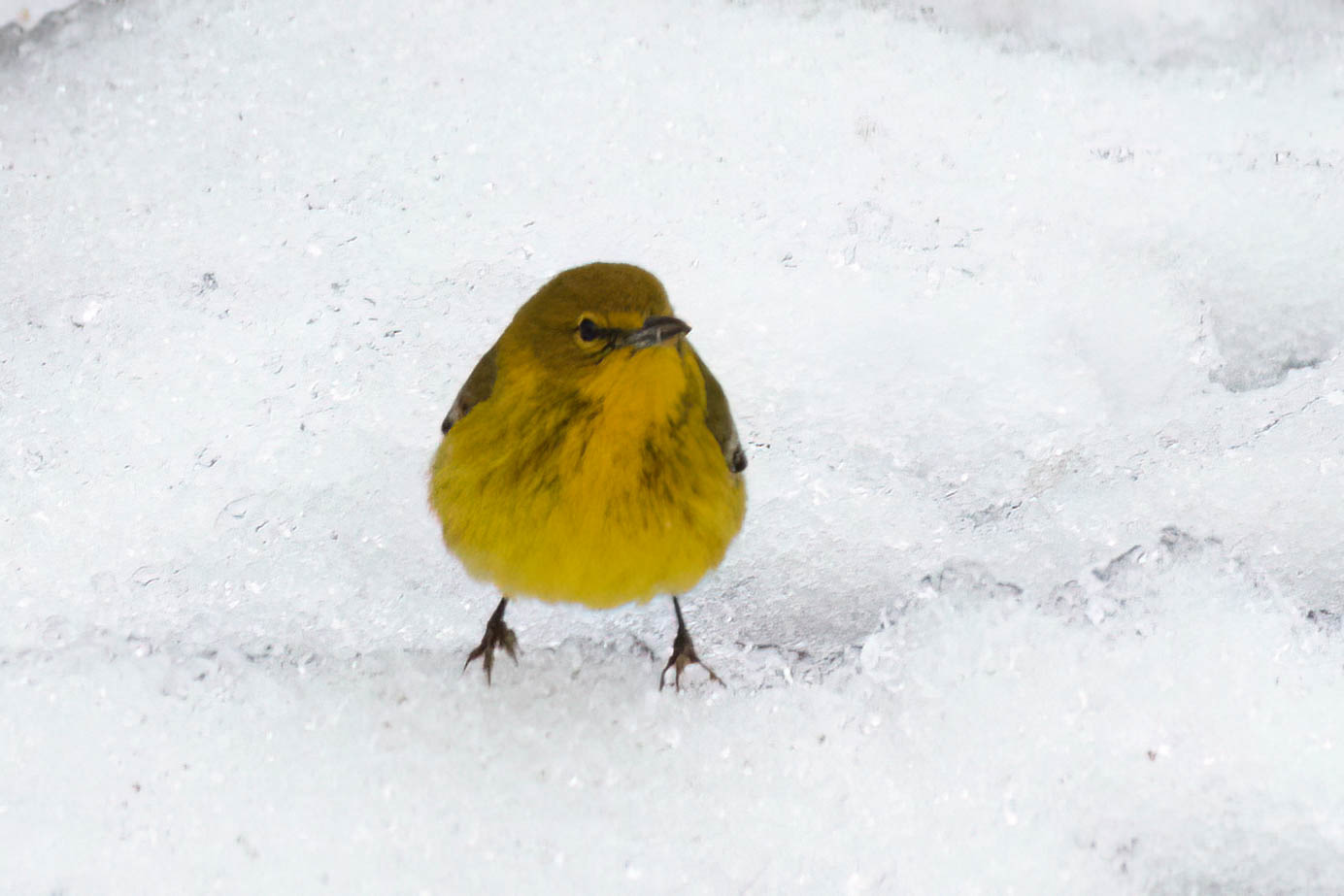

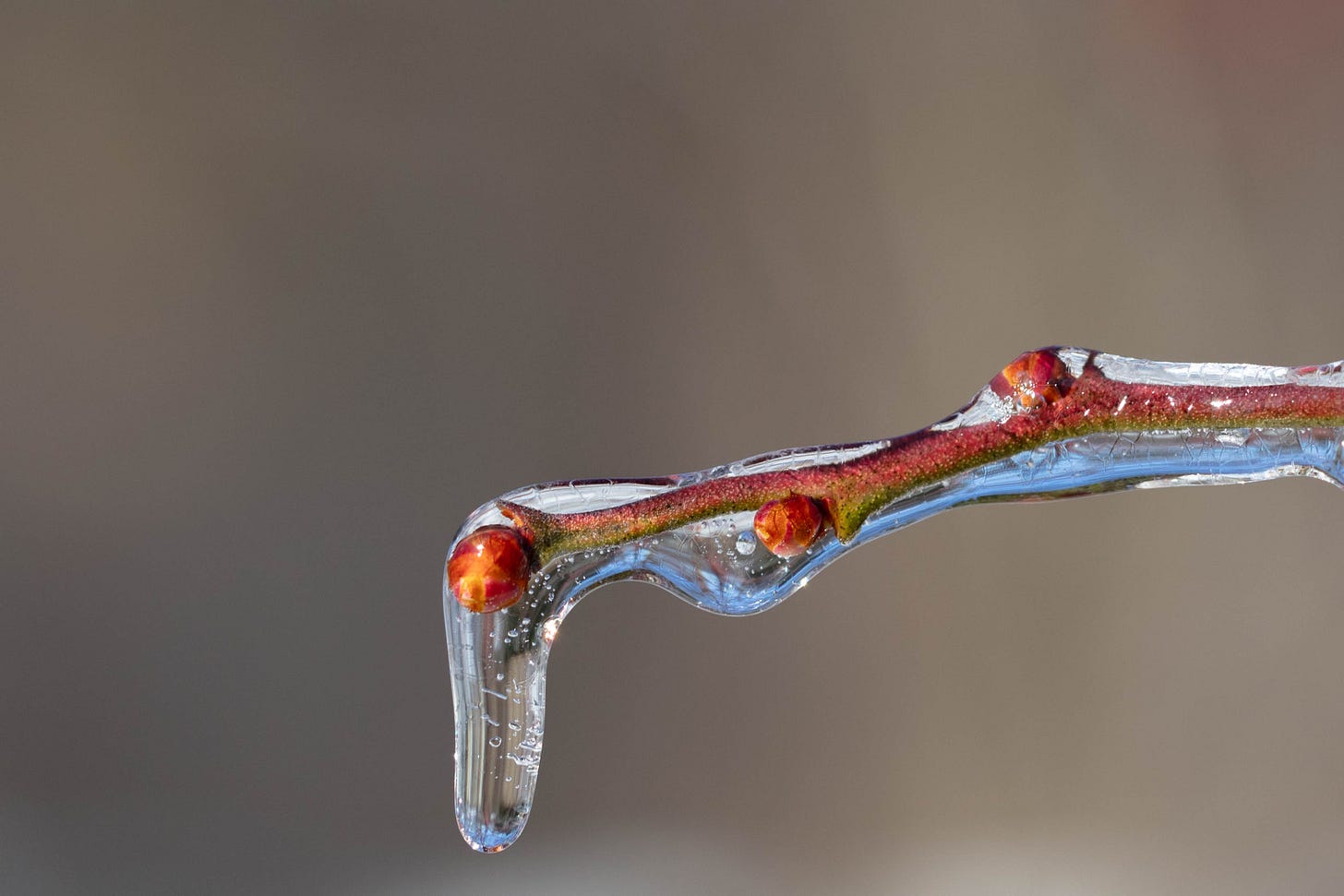

Amazing photos and what a beautiful journey you took us on through all the small wonders found in your neighborhood!
“Fast, fat snowflakes fell through the chill, gray air — falling stars from the not-quite-morning sky.” Beautiful essay. Poetic.